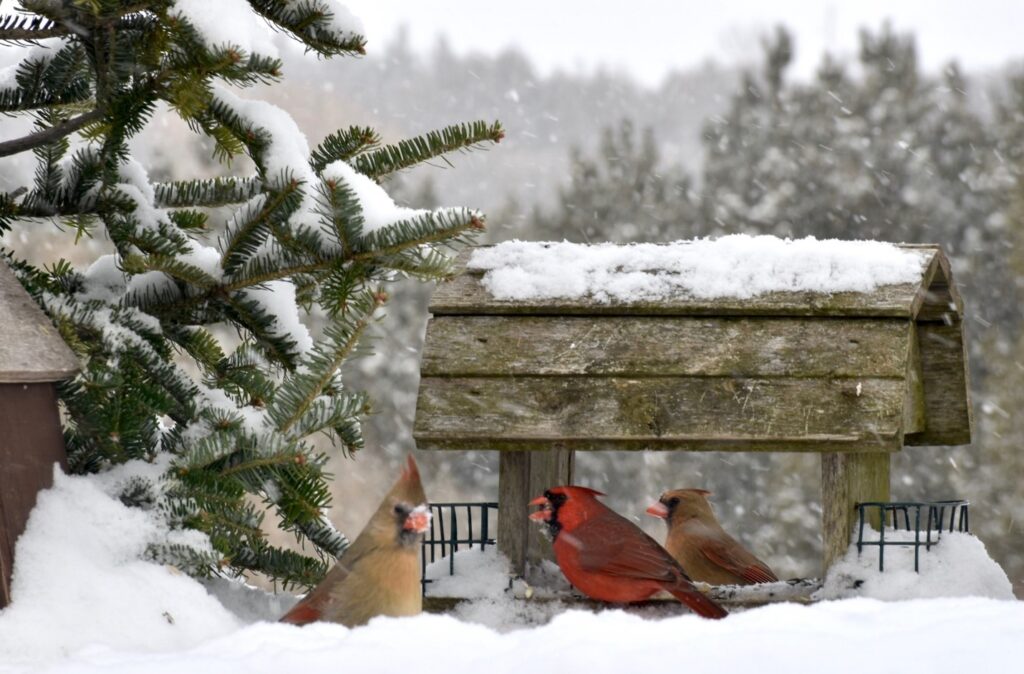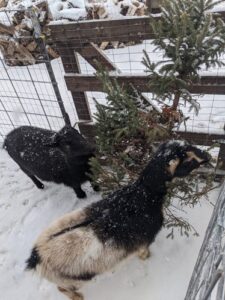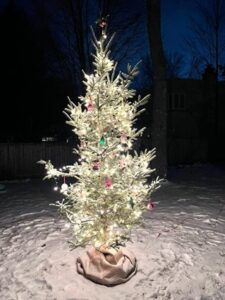By: Dan Buckler, Urban Forest Assessment Specialist, daniel.buckler@wisconsin.gov

There aren’t any permanent trees in this part of Kevin Naze’s yard, but Christmas trees help blunt the winter winds for cardinals and other visiting birds.
In last month’s newsletter we posted a survey on how readers use their Christmas tree following its initial use as an umbrella for gifts.
Readers came through with pragmatic, delightful and creative ways that they put their stray Christmas trees to work.

These goats are really getting into the holiday spirit!
Many respondents noted using the trees for wildlife habitat, including one reader thrilled to contribute to their brush piles that always attract four-legged critters in the winter. However, readers were most keen on protecting birds from winter wind, including Priscilla Wilson who wrote that, “We set it up next to the house by a window so the birds can have a place to stay out of the wind and we can easily watch them.”
Others use the tree trunks to line roads and trails through the winter. Kim Walker-Daniels said that the trunks line paths through their woods, and the branches become mulch on those very paths.
Another reader used the tree branches as garden stakes. For example, they use branches to hold up droopy peonies. Genius!
There were even two respondents who feed trees to their goats.

Don’t worry, Santa visits trees outside too. Though make sure to protect cookies and milk from the elements.
While goats might be encouraged to eat Christmas trees, human kids need a more well-rounded diet. With a curious one-year-old in the house, Laura Buntrock decided to keep the tree outside, “which we decorated with lights and ornaments. It has been a magical sight in our backyard when its branches are covered in fresh snow.”
Of the 28 respondents, exactly half used their Christmas trees to create wildlife habitat, a third used them to create compost or mulch, and a third used them for firewood (that adds up to more than 100% because people could select multiple options). Giving the tree a new life (or, in some of these examples, new lives) is a great way to honor something previously at the heart of your holiday festivities.
May you and your trees continue to give blessings to the world.
